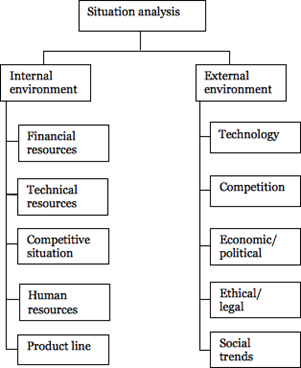5.1: Introduction
- Page ID
- 21357
\( \newcommand{\vecs}[1]{\overset { \scriptstyle \rightharpoonup} {\mathbf{#1}} } \)
\( \newcommand{\vecd}[1]{\overset{-\!-\!\rightharpoonup}{\vphantom{a}\smash {#1}}} \)
\( \newcommand{\dsum}{\displaystyle\sum\limits} \)
\( \newcommand{\dint}{\displaystyle\int\limits} \)
\( \newcommand{\dlim}{\displaystyle\lim\limits} \)
\( \newcommand{\id}{\mathrm{id}}\) \( \newcommand{\Span}{\mathrm{span}}\)
( \newcommand{\kernel}{\mathrm{null}\,}\) \( \newcommand{\range}{\mathrm{range}\,}\)
\( \newcommand{\RealPart}{\mathrm{Re}}\) \( \newcommand{\ImaginaryPart}{\mathrm{Im}}\)
\( \newcommand{\Argument}{\mathrm{Arg}}\) \( \newcommand{\norm}[1]{\| #1 \|}\)
\( \newcommand{\inner}[2]{\langle #1, #2 \rangle}\)
\( \newcommand{\Span}{\mathrm{span}}\)
\( \newcommand{\id}{\mathrm{id}}\)
\( \newcommand{\Span}{\mathrm{span}}\)
\( \newcommand{\kernel}{\mathrm{null}\,}\)
\( \newcommand{\range}{\mathrm{range}\,}\)
\( \newcommand{\RealPart}{\mathrm{Re}}\)
\( \newcommand{\ImaginaryPart}{\mathrm{Im}}\)
\( \newcommand{\Argument}{\mathrm{Arg}}\)
\( \newcommand{\norm}[1]{\| #1 \|}\)
\( \newcommand{\inner}[2]{\langle #1, #2 \rangle}\)
\( \newcommand{\Span}{\mathrm{span}}\) \( \newcommand{\AA}{\unicode[.8,0]{x212B}}\)
\( \newcommand{\vectorA}[1]{\vec{#1}} % arrow\)
\( \newcommand{\vectorAt}[1]{\vec{\text{#1}}} % arrow\)
\( \newcommand{\vectorB}[1]{\overset { \scriptstyle \rightharpoonup} {\mathbf{#1}} } \)
\( \newcommand{\vectorC}[1]{\textbf{#1}} \)
\( \newcommand{\vectorD}[1]{\overrightarrow{#1}} \)
\( \newcommand{\vectorDt}[1]{\overrightarrow{\text{#1}}} \)
\( \newcommand{\vectE}[1]{\overset{-\!-\!\rightharpoonup}{\vphantom{a}\smash{\mathbf {#1}}}} \)
\( \newcommand{\vecs}[1]{\overset { \scriptstyle \rightharpoonup} {\mathbf{#1}} } \)
\( \newcommand{\vecd}[1]{\overset{-\!-\!\rightharpoonup}{\vphantom{a}\smash {#1}}} \)
\(\newcommand{\avec}{\mathbf a}\) \(\newcommand{\bvec}{\mathbf b}\) \(\newcommand{\cvec}{\mathbf c}\) \(\newcommand{\dvec}{\mathbf d}\) \(\newcommand{\dtil}{\widetilde{\mathbf d}}\) \(\newcommand{\evec}{\mathbf e}\) \(\newcommand{\fvec}{\mathbf f}\) \(\newcommand{\nvec}{\mathbf n}\) \(\newcommand{\pvec}{\mathbf p}\) \(\newcommand{\qvec}{\mathbf q}\) \(\newcommand{\svec}{\mathbf s}\) \(\newcommand{\tvec}{\mathbf t}\) \(\newcommand{\uvec}{\mathbf u}\) \(\newcommand{\vvec}{\mathbf v}\) \(\newcommand{\wvec}{\mathbf w}\) \(\newcommand{\xvec}{\mathbf x}\) \(\newcommand{\yvec}{\mathbf y}\) \(\newcommand{\zvec}{\mathbf z}\) \(\newcommand{\rvec}{\mathbf r}\) \(\newcommand{\mvec}{\mathbf m}\) \(\newcommand{\zerovec}{\mathbf 0}\) \(\newcommand{\onevec}{\mathbf 1}\) \(\newcommand{\real}{\mathbb R}\) \(\newcommand{\twovec}[2]{\left[\begin{array}{r}#1 \\ #2 \end{array}\right]}\) \(\newcommand{\ctwovec}[2]{\left[\begin{array}{c}#1 \\ #2 \end{array}\right]}\) \(\newcommand{\threevec}[3]{\left[\begin{array}{r}#1 \\ #2 \\ #3 \end{array}\right]}\) \(\newcommand{\cthreevec}[3]{\left[\begin{array}{c}#1 \\ #2 \\ #3 \end{array}\right]}\) \(\newcommand{\fourvec}[4]{\left[\begin{array}{r}#1 \\ #2 \\ #3 \\ #4 \end{array}\right]}\) \(\newcommand{\cfourvec}[4]{\left[\begin{array}{c}#1 \\ #2 \\ #3 \\ #4 \end{array}\right]}\) \(\newcommand{\fivevec}[5]{\left[\begin{array}{r}#1 \\ #2 \\ #3 \\ #4 \\ #5 \\ \end{array}\right]}\) \(\newcommand{\cfivevec}[5]{\left[\begin{array}{c}#1 \\ #2 \\ #3 \\ #4 \\ #5 \\ \end{array}\right]}\) \(\newcommand{\mattwo}[4]{\left[\begin{array}{rr}#1 \amp #2 \\ #3 \amp #4 \\ \end{array}\right]}\) \(\newcommand{\laspan}[1]{\text{Span}\{#1\}}\) \(\newcommand{\bcal}{\cal B}\) \(\newcommand{\ccal}{\cal C}\) \(\newcommand{\scal}{\cal S}\) \(\newcommand{\wcal}{\cal W}\) \(\newcommand{\ecal}{\cal E}\) \(\newcommand{\coords}[2]{\left\{#1\right\}_{#2}}\) \(\newcommand{\gray}[1]{\color{gray}{#1}}\) \(\newcommand{\lgray}[1]{\color{lightgray}{#1}}\) \(\newcommand{\rank}{\operatorname{rank}}\) \(\newcommand{\row}{\text{Row}}\) \(\newcommand{\col}{\text{Col}}\) \(\renewcommand{\row}{\text{Row}}\) \(\newcommand{\nul}{\text{Nul}}\) \(\newcommand{\var}{\text{Var}}\) \(\newcommand{\corr}{\text{corr}}\) \(\newcommand{\len}[1]{\left|#1\right|}\) \(\newcommand{\bbar}{\overline{\bvec}}\) \(\newcommand{\bhat}{\widehat{\bvec}}\) \(\newcommand{\bperp}{\bvec^\perp}\) \(\newcommand{\xhat}{\widehat{\xvec}}\) \(\newcommand{\vhat}{\widehat{\vvec}}\) \(\newcommand{\uhat}{\widehat{\uvec}}\) \(\newcommand{\what}{\widehat{\wvec}}\) \(\newcommand{\Sighat}{\widehat{\Sigma}}\) \(\newcommand{\lt}{<}\) \(\newcommand{\gt}{>}\) \(\newcommand{\amp}{&}\) \(\definecolor{fillinmathshade}{gray}{0.9}\)The car industry and technology
The EV1 is an electric car built by US based General Motors, marketed under the Saturn brand. The EV1 was introduced to California and Arizona in 1996 with an estimated USD 25 million marketing campaign.
In 1997, a clean air mandate went into effect in three US states—California, Massachusetts, and New York. The mandate requires that each year, a certain percentage of vehicles sold must be zero-emission vehicles. California has since pushed its deadline to the year 2003, but requires that 10 per cent of all vehicles sold be zero-emission. General Motors stayed with the original date and won acclaim for the zero-emission technology. General Motors is not the only company with an interest in developing electric-powered vehicles. Here are several other electric projects that are underway:
- Honda EV Plus, introduced in 1997 and marketed to families of four
- Chrysler EPIC
- Nissan Prairie Jay minivan
- Ford Ranger EV
- Chevy S-10 pickups
- Toyota RAV4-EV sport-utility vehicle
Production of electric vehicles was undertaken in response to voter mandates, a factor external to the firm. Now, auto producers are introducing electric vehicles in part to learn about customer reactions. There is still much to learn about electric-powered technology. Today, there are concerns about things like range, price, and refueling of electric vehicles. This is quite a drastic change from typical customer concerns like car phones, cup holders, and other frills associated with gas-powered vehicles. A few other facts about General Motors' EV1:
- It leases for between USD 399 and USD 549 monthly.
- Monthly payments on a typical purchase are around USD 500.
- They have limited range (about 120 miles or 193.21 Km between changes).
- Recharging takes several hours.
- They are currently best as a second vehicle.[1]
Introduction
When marketing organizations plan strategically, the key question is: "Does the strategic planning process raise the overall level of the organization's effectiveness, and does it provide the new strategic direction that is required for the future?" A good strategic plan must help marketing organizations recognize the interrelationships among various forces in the business environment. These interrelationships must be accounted for if the organization is to be capable of implementing its vision.
It is important to recognize that most existing planning processes have an internal focus. Internal planning processes ask questions like, "What are our strengths and weaknesses? "What comparative cost advantages do we have?" and "What product features provide us with an advantage?"
The external planning approach asks these same questions but also attempts to understand how all of the elements of the marketplace relate to each other. In this chapter, we focus on the external environmental factors that have an impact on the organization, especially the marketing function. In the chapters that follow, we consider the marketplace and its behavior.
As shown in Exhibit 13, marketing managers are confronted with many environmental concerns, including technology; customer; competitor; ethical/legal; and economic, political, demographic, and social trends. All organizations should continuously appraise their situation and adjust their strategy to adapt to the environment.
One technique used by organizations to monitor the environment is known as environmental scanning, which refers to activities directed toward obtaining information about events and trends that occur outside the organization and that can influence the organization's decision making. In a sense, such data collection scanning acts as an early warning system for the organization. It allows marketers to understand the current state of the environment and to predict trends. A formal but simple strategic information scanning system can enhance the effectiveness of the organization's environmental scanning efforts. An information system (part of marketing research) organizes the scanning effort so that information related to specific situations can be more readily obtained and used.

A good strategic plan requires careful monitoring of the marketing organization's external environment. The external environment represents sources of opportunities and threats. If the marketing organization is to align its capabilities and resources with opportunities and threats, it must know what those threats are. It is important that marketing organizations have a strategy to uncover relevant strategic opportunities and threats early. As threats and opportunities appear, marketing organizations should develop strategies to deal with them.
Another problem is that at any one time, there may appear to be a great many opportunities and threats looming. Marketers must be able to prioritize these opportunities and threats according to such factors as their relevance to the organization, the cost effectiveness of strategies to deal with the threats and opportunities, and the urgency of the threat or opportunity. Organizations are inundated with information and must therefore have an effective mechanism for sorting out that information which is relevant to the organization.
Only after the marketing environment is thoroughly understood can an organization spot trends and determine whether they represent market opportunities or market threats.
1. [1]Sources: "OM's Advanced Auto Technologies Showcased at Democratic National Convention,” Financial News. August 13,2000; Jon Pepper, "California Mandate for Electric Cars Means OM Has a Lot to Explain,” The Detroit News, August 23, 2000. p. 1; Paul Rog0rs, "California Air Officials Want Auto Makers to Deliver Electric Cars in Two Years,” San Jose Mercury News, September 9, 2000.


